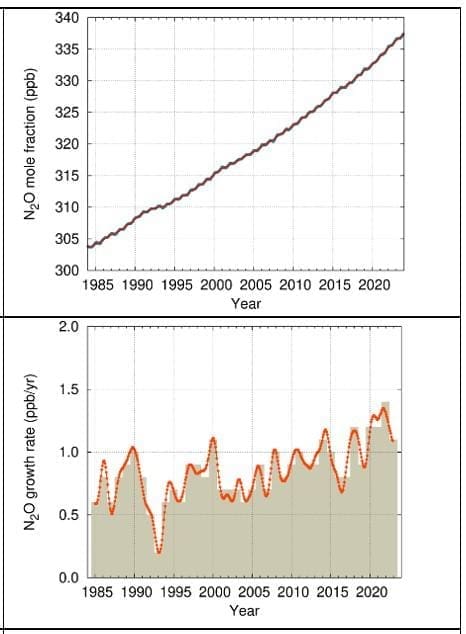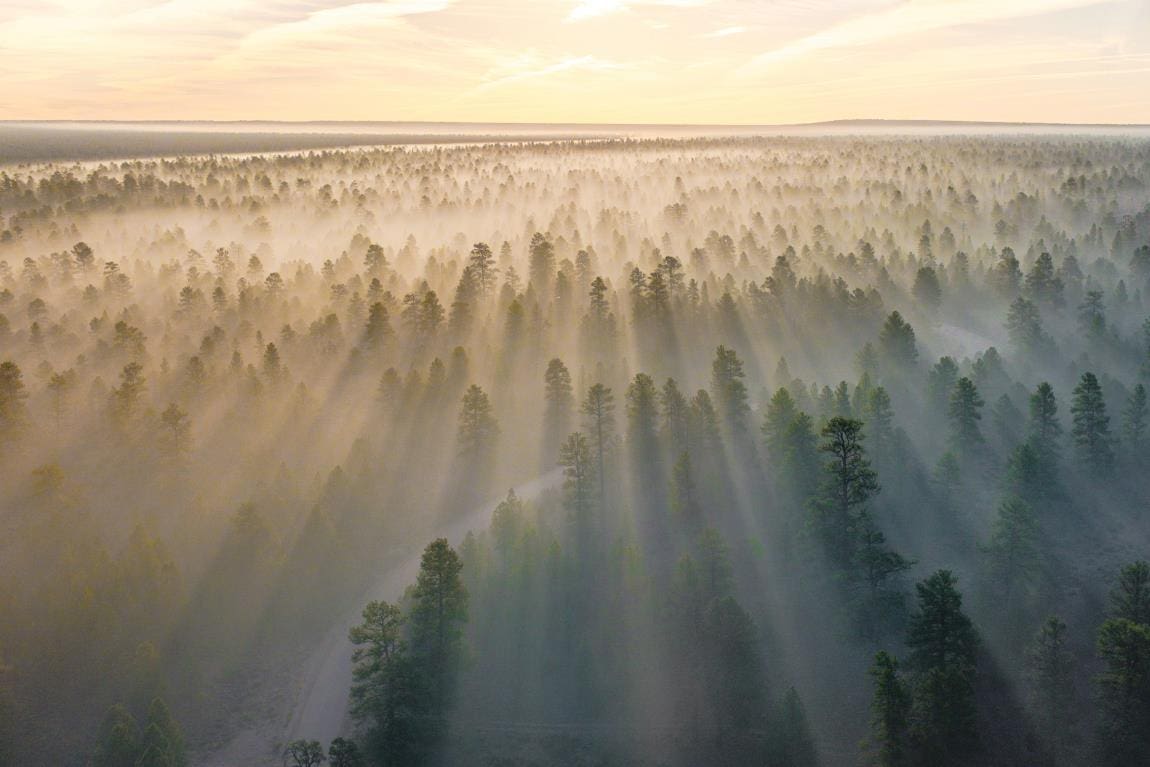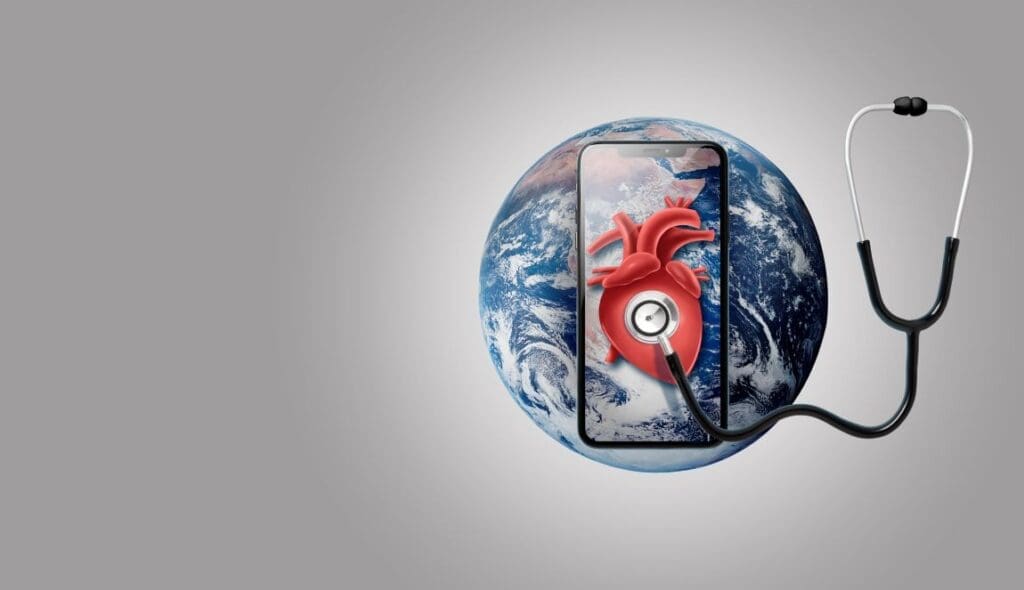Greenhouse gas concentrations soared to unprecedented levels in 2023, setting the stage for prolonged temperature rises and intensifying climate change impacts.
The World Meteorological Organization (WMO) released its annual Greenhouse Gas Bulletin, which warned that the relentless increase of carbon dioxide (CO₂), methane, and nitrous oxide in the atmosphere could impede progress toward global climate goals and heighten the urgency for immediate action.
According to the WMO report, CO₂ concentrations reached a global average of 420 parts per million (ppm), methane levels hit 1,934 parts per billion (ppb), and nitrous oxide registered at 336.9 ppb in 2023. These levels represent 151%, 265%, and 125% of their respective pre-industrial values (before 1750), underscoring the transformative effects of human activity on Earth’s atmosphere.
This trend shows no signs of slowing down, with CO₂ alone increasing by more than 11% over the past two decades.
WMO Secretary-General Celeste Saulo called for urgent action, stating: “Another year. Another record. This should set alarm bells ringing among decision-makers. We are clearly off track to meet the Paris Agreement goal of limiting global warming to well below 2°C and aiming for 1.5°C above pre-industrial levels. These are more than just statistics. Every part per million and every fraction of a degree temperature increase has a real impact on our lives and our planet.”
The 2023 report emphasized that natural phenomena and human-driven activities both contributed to the record-setting greenhouse gas levels. An intense wildfire season and the return of El Niño in 2023 led to more CO₂ emissions and possibly hindered carbon absorption by forests.
In particular, vegetation fires in Canada and Australia contributed to the surge, with Canada experiencing its worst wildfire season on record, while Australia endured its driest three-month period from August to October. Overall, carbon emissions from wildfires in 2023 were 16% above average.

The persistent rise of Carbon Dioxide
The ongoing accumulation of Carbon Dioxide (CO₂), the most critical greenhouse gas emitted by human activities, primarily results from fossil fuel combustion and cement production. Accounting for approximately 64% of the warming effect from greenhouse gases, CO₂ levels continued to rise in 2023. The annual increase of 2.3 ppm marked the 12th consecutive year with an increase above 2 ppm, underscoring the difficulty of reversing this trend. As long as emissions continue, the WMO warns, CO₂ will accumulate in the atmosphere, locking in further temperature rises for decades to come.
The persistence of CO₂ in the atmosphere has profound implications. Due to its longevity, even if emissions were reduced to zero, the current CO₂ level would continue to drive warming for several decades. The Earth last experienced comparable CO₂ concentrations 3–5 million years ago, a time when average global temperatures were 2–3°C higher, and sea levels stood 10–20 meters above current levels.

Methane’s record levels raise additional alarms
Methane, a greenhouse gas with a shorter lifespan but over 80 times more warming potential than CO₂ in the near term, also reached near-record concentrations in 2023.
Although its annual increase was smaller than in 2022, methane levels were at record highs over the past five years, partially due to emissions from agriculture and natural wetland sources. Approximately 60% of methane emissions stem from human activities, including livestock farming, rice cultivation, fossil fuel production, and biomass burning.
Methane’s volatility, coupled with its powerful warming effect, raises concerns about its contribution to climate change, especially when climate feedback loops begin to amplify emissions. The WMO report notes that ongoing climate feedbacks could intensify methane emissions from natural systems, posing a potential threat to climate stability.
The double role of Nitrous Oxide

Nitrous Oxide (N₂O) contributes approximately 6% of the warming effect from long-lived greenhouse gases and also serves as an ozone-depleting chemical. Emissions of N₂O arise from both natural sources (such as oceans and soils) and human activities (notably fertilizer use and industrial processes).
The 2023 increase in N₂O concentrations was lower than the record-breaking 2021–2022 increase, yet remains part of a concerning upward trend.
The impact of nitrous oxide is magnified by its dual role in warming and ozone depletion, complicating efforts to manage emissions and mitigate climate impacts. This is especially critical as agricultural activities and fertilizer use expand globally, contributing to a steady rise in N₂O levels.
As world leaders prepare for COP29 in Baku, Azerbaijan, the WMO’s findings add urgency to discussions on climate action. The Greenhouse Gas Bulletin emphasizes that meeting global temperature goals set in the Paris Agreement will require addressing both emissions and the intricate dynamics of carbon sinks, like forests and oceans. A significant share of CO₂ is currently absorbed by the ocean (over one-quarter) and by land ecosystems (just under 30%), but natural fluctuations, including El Niño events, can undermine these natural sinks’ efficiency.
WMO Deputy Secretary-General Ko Barrett warned of potential feedback loops that could accelerate climate change, stating: “The Bulletin warns that we face a potential vicious cycle. Natural climate variability plays a big role in the carbon cycle. But in the near future, climate change itself could cause ecosystems to become larger sources of greenhouse gases. Wildfires could release more carbon emissions into the atmosphere, whilst the warmer ocean might absorb less CO₂. Consequently, more CO₂ could stay in the atmosphere to accelerate global warming.”
To confront the challenges posed by rising greenhouse gases, the WMO underscores the need for improved understanding of carbon-climate feedbacks and immediate reductions in greenhouse gas emissions. The 2023 data illustrate the complex interplay between natural cycles and human activities, reinforcing the urgency of decisive, coordinated global action to stabilize greenhouse gas levels and mitigate the worst effects of climate change.
Article Source:
Press Release/Material by World Meteorological Organization (WMO)
Featured image credit: Chris Lawton | Unsplash




